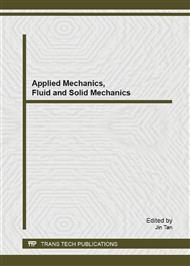[1]
NAVSEA: Guide for Planning and Managing Shock Trials of Surface Ships, NAVSEA 0908-LP-000-0010, April (1989).
Google Scholar
[2]
C.C. Liang, C.Y. Hsu and W.H. Lai: A study of transient responses of a submerged spherical shell under shock waves. Ocean Eng, (2000), 28, PP: 71–94.
DOI: 10.1016/s0029-8018(99)00056-6
Google Scholar
[3]
C.C. Liang, Y.S. Tai: Shock responses of a surface ship subjected to noncontact underwater explosions. Ocean Eng, (2006), 33, PP: 748–772.
DOI: 10.1016/j.oceaneng.2005.03.011
Google Scholar
[4]
I.K. Parka, J.C. Kima, C.W. Ana, et al.: Measurement of naval ship responses to underwater explosion shock loadings. Shock and Vibration , (2003), 10 , PP: 365–377.
DOI: 10.1155/2003/803475
Google Scholar
[5]
J. Leppanen: Experiments and numerical analyses of blast and fragment impacts on concrete. Int J Impact Eng , (2005), 43(6), 843–860.
Google Scholar
[6]
ICOLD: Selecting parameters for large dams-guidelines and recommendations. ICOLD Committee on seismic aspects of large dams. Bulleton, (1989).
DOI: 10.1201/9780429329012
Google Scholar
[7]
W.F. Chen, S. Charles: Earthquake Engineering handbook, Boca Raton, FL: CRC Press(2003).
Google Scholar
[8]
G.J. Bureau, G.D. Ballentine: A comprehensive seismic vulnerability and loss assessment of the State of South Carolina using HAZUS. 7th National Conference on Earthquake Engineering, Boston. (2002).
Google Scholar
[9]
L. Zhang, S.S. Hu, D.X. Chen, et al: Spall characteristics of concrete materials", Explosion and Shock waves , (2008) , 28(3), 193-199. (in Chinese).
Google Scholar
[10]
Cole, R.H.: Underwater Explosions. Princeton University Press, Princeton(1948).
Google Scholar
[11]
B.E. Gel'fand and K. Takayama: Similarity Criteria for Underwater Explosions. Combustion. Explosion, and Shock Waves, (2004), 40(2), 214-218.
DOI: 10.1023/b:cesw.0000020144.55275.df
Google Scholar


